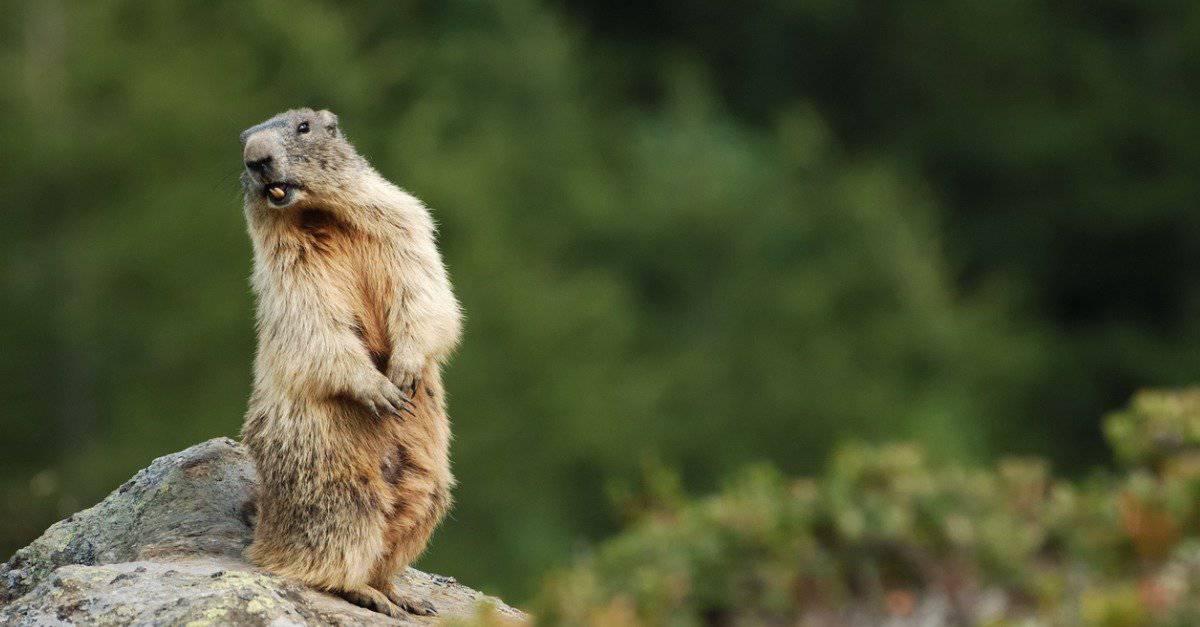Marmots and groundhogs look incredibly similar and can be easily confused at first glance. Thankfully, there are a few key differences that can help us distinguish the two. Let’s explore these differences and learn how the battle of Marmot Vs. Groundhog actually shows us how unique they really are! Here are the 6 most notable differences between marmots and groundhogs.
Marmots are members of the squirrel family, clocking in as the heaviest members in the world! Within the marmot family are 15 unique species, one of which is the groundhog. Essentially, all groundhogs are marmots, but not all marmots are groundhogs. Today, however, we are going to be covering a common distinction between groundhogs and another common species of marmot known as the yellow-bellied marmot.
The 6 Main Differences Between Marmots and Groundhogs
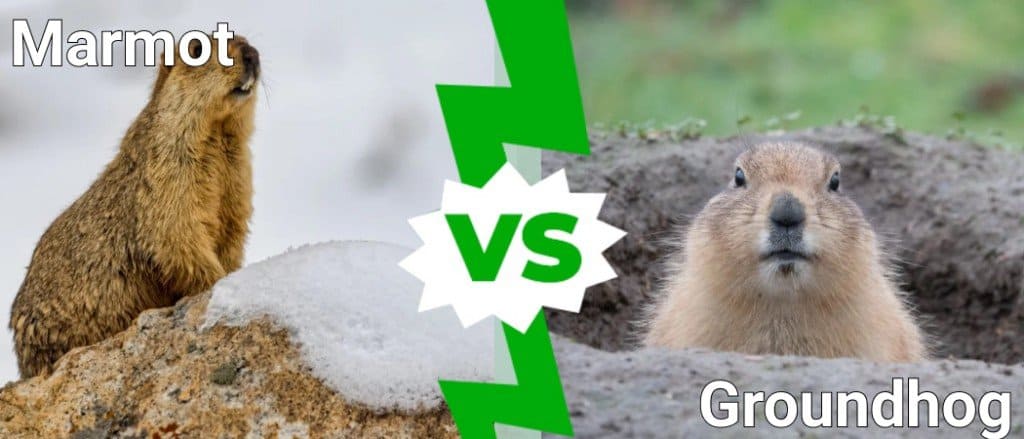
The main difference between groundhogs and marmots is that groundhogs are slightly larger and are less colorful. In addition, yellow-bellied marmots live in the Western United States while groundhogs are more widespread. Groundhogs will also burrow in more varied environments and are less social than marmots.
Let’s dive into more details on each of these differences!
Marmot Vs Groundhog: Size
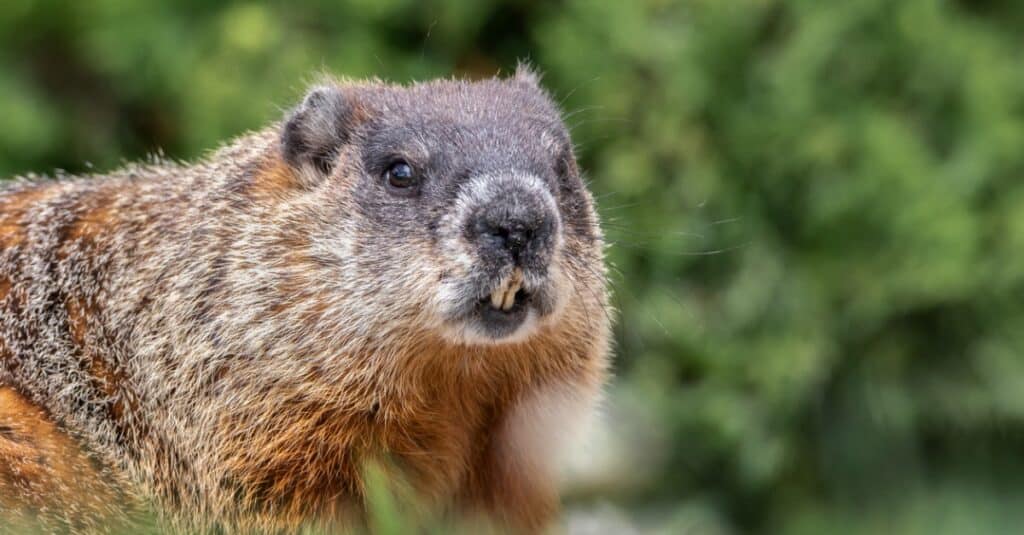
Groundhogs are larger than their yellow-bellied cousins by a few pounds.
©iStock.com/Jean Landry
Yellow-bellied marmots are smaller than groundhogs, but not by much. Generally, they only grow to 27 inches long and generally weigh between 3 and 9 lbs.
Groundhogs aren’t just large rodents, they are some of the largest species of marmot in the world. They can be up to 20 inches long and weigh between 6-12 lbs, with some individuals getting even larger. Groundhogs reach sexual maturity between 1-2 years in the wild and generally have a lifespan of 3 to 5 years, although in captivity they can live closer to 15 years.
To reach these sizes, both marmots and groundhogs primarily eat plants. However, marmots will also eat eggs and insects in addition to grasses, berries, seeds, and roots. Groundhogs primarily eat vegetation like grasses and flowing plants, but have been seen eating insects, mollusks, and even small birds!
Marmot Vs Groundhog: Coloration

“Marmot” is a family of animals that includes 15 species in the United States.
©Egoreichenkov Evgenii/Shutterstock.com
The easiest way to identify a yellow-bellied marmot is from, well, its yellow belly. They have distinct yellow fur across their chest and stomach. Their backs, head, and tail are covered in brown or grey fur, with some individuals having a white spot on their foreheads.
Groundhogs are more variable in their color possibilities but are overall more consistent across their body in whatever color they are. They can range from a grey-brown to a cinnamon brown across their entire bodies. Their snouts are generally the only place where their coloration changes, but it mostly depends on the individual.
Marmot Vs Groundhog: Range
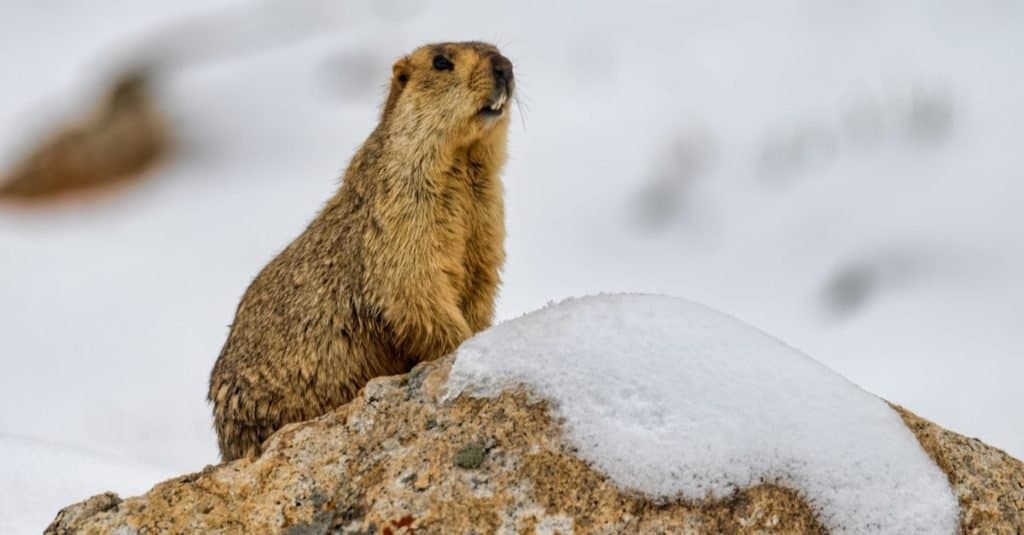
Yellow-bellied marmots live along the mountain ranges in the western United States while groundhogs live east of the Mississippi.
©Kamal Hari Menon/Shutterstock.com
Yellow-bellied marmots have a relatively small range when compared to the groundhog. They are specialized for mountainous environments, almost entirely being found at elevations higher than 2,000 feet. The most common places to find yellow-bellied marmots are in meadows and prairies across the Rocky Mountains and the Sierra Nevadas.
Groundhogs are widespread across much of the United States. They are found east of the Mississippi, as far south as Alabama, and as far north as the Hudson Bay. They do spread west, but only in the northern regions of Canada. Groundhogs are usually the most common marmots to interact with humans because their range and preferred habitat coincide with human population centers.
Marmot Vs Groundhog: Burrows
All ground squirrels have burrows, but marmots may just be the masters of them. Yellow-bellied marmots live in rocky soil, often with massive boulders present. As an adaptation, they often construct their dens and burrows under these large boulders, allowing them to escape from predators without the potential of being dug out. They are also known for hiding from predators in rock piles.
Groundhogs also construct burrows, only they aren’t as picky as yellow-bellied marmots are. Generally, they will burrow near woodland edges and in well-drained soil. Burrows can have multiple chambers, all designed for a specific use, things like nurseries, bathrooms, and more.
Marmot Vs Groundhog: Social habits
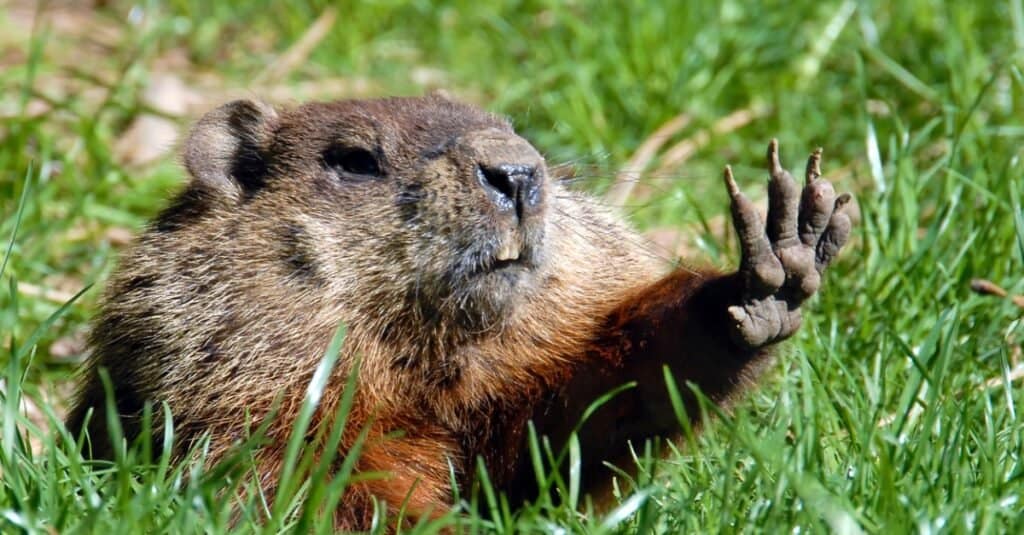
Groundhogs are the most solitary members of the marmot family.
©iStock.com/mirecca
All marmot species are extremely social and intelligent animals. Yellow-bellied marmots form complex social relationships and usually congregate in groups of up to 20 individuals. These colonies have different male/female relationships and even have a whistling communication system.
Groundhogs are also social; they are just the most solitary of all the marmot species. Most family groups consist of a breeding pair and the young from the last few litters. Yellow-bellied marmots are more social than most groundhogs.
Marmot Vs Groundhog: Status as a pest
Yellow-bellied marmots are considered pests in some places, but their relative isolation keeps them from being a real nuisance to farmers or builders.
Groundhogs, on the other hand, are famous pests. They often burrow near farms and gardens and have no issue with eating massive amounts of crops. Additionally, their burrows can often cause structural damage to buildings and roads.
Bonus: Why Do We Celebrate Groundhog Day?
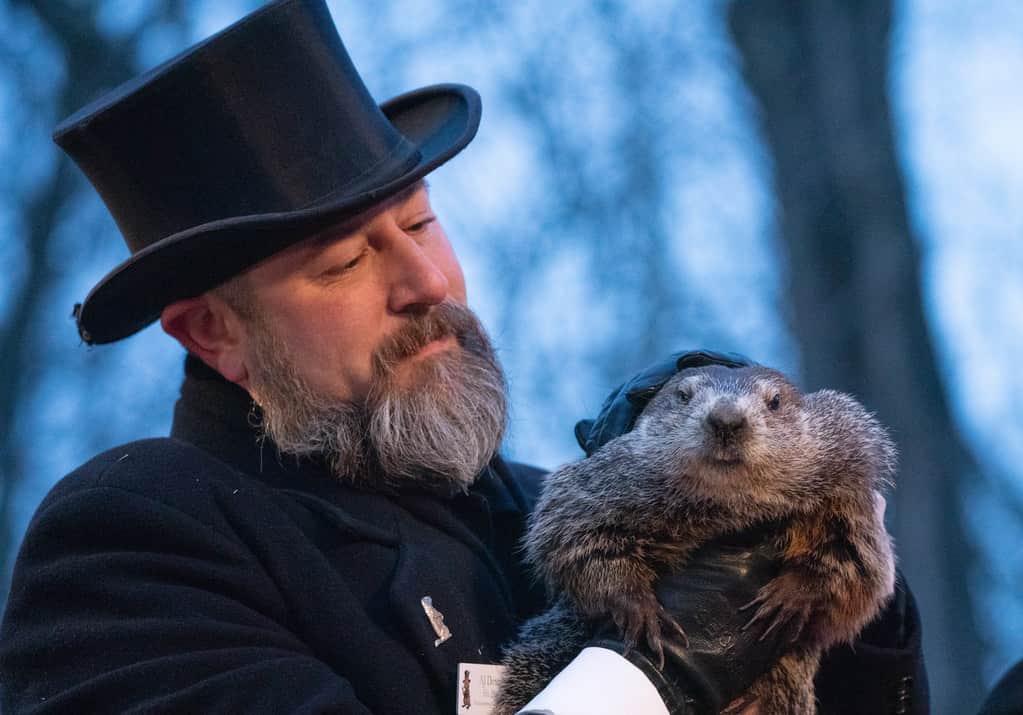
Punxsutawney Phil may be the most famous groundhog in history.
Ever wonder why Groundhog Day is even a thing? Every February 2 you can bet on your local newscast featuring a clip of Punxsutawney Phil being pulled from his burrow and held up for the cameras – while the official announces the results of Phil’s emergence from hibernation. Did he see his shadow? If so, the sun was out – meaning that the noble groundhog would crawl back into his nest to sleep for four more weeks of cold weather. Who came to believe that groundhogs could predict the weather in the first place?
Weather prognostication was always important – ancient Celts celebrated the beginning of each of the four seasons – with their popular festivals incorporated into the Christian calendar in the early days of the church. Candlemas was the name of the Christian event – a time for people to bring their candles to church for a blessing – and also a time to predict the weather as per the Celtic tradition. How did groundhogs become involved? We can thank the Germans for that!
In Germany, people observed the habits of badgers, burrowing mammals with the same hibernation habits as groundhogs. When they immigrated to America – mostly between 1727 and 1775 – the humble groundhog replaced the badger. The practice wasn’t confined to a single town but occurred wherever German populations flourished – mostly in Pennsylvania Dutch country – where “Groundhog Lodges” sprang up and an entire social club was born.
There was so much fun and merriment involved that the practice caught on among all Americans – and Groundhog Day became a quirky tradition that continues in the U.S. and Canada to this day. Why is it not “Marmont Day”? Remember what you learned in this article – marmots live west of the Mississippi – the Pennsylvania Dutch lived east – in the land of the groundhog.
Thank you for reading! Have some feedback for us? Contact the AZ Animals editorial team.

